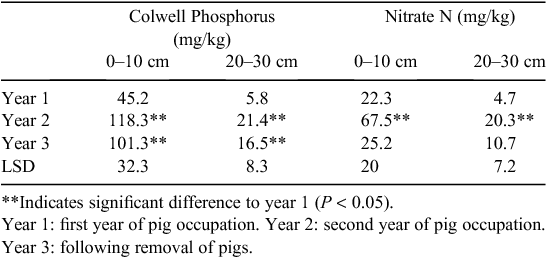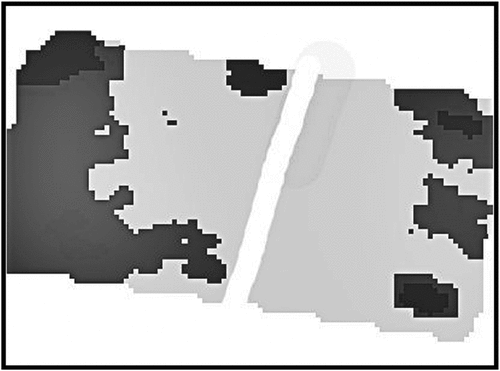Soil nitrate and phosphorus accumulates rapidly with a non-uniform distribution in two outdoor pig areas
S. G. WiedemannA FSA Consulting, Toowoomba, QLD 4350.
B Corresponding author. Email: stephen.wiedemann@fsaconsulting.net
Animal Production Science 55(12) 1464-1464 https://doi.org/10.1071/ANv55n12Ab105
Published: 11 November 2015
With an increasing number of pigs in Australia managed in outdoor systems, a greater understanding of the impact of these systems on environmental sustainability is required. Previous research (Galloway and Wiedemann 2011) applied electro-magnetic induction (EMI) technology to measure spatial variability in nutrient distribution across paddocks at two outdoor piggeries, and showed a distinct pattern of elevated nutrient levels in some parts of the paddocks. The present study aimed to extend this research by first, determining the rate of soil profile nutrient accumulation and distribution at rotational outdoor piggeries and second, to measure the impact of changing management practices to improve nutrient distribution.
Soil nutrients were measured over a 3-year period on four paddocks at different stages in rotation. Soil mapping using EMI was applied to determine 12 sampling points annually, based on variability in apparent soil conductivity (ECa). Nutrient distribution maps were determined from a regression of ECa and nutrient levels. Four fixed monitoring points were also established in each paddock and sampled annually at 0–10 cm and 20–30 cm depths, and results were analysed using ANOVA between means for each year. Significant differences were determined using the least significant difference (LSD) test.
Mean soil Colwell phosphorus (P) and nitrate N levels increased significantly (P < 0.05) between year 1 (the first year of pig occupation) and year 2 (Table 1). Colwell P levels exceeded the upper environmental threshold level of 85 mg/kg in the surface (0–10 cm) in the second year and remained elevated after pigs were removed in year 3.

|
Nitrate N (Fig. 1) and P (data not shown) were distributed in a non-uniform pattern, corresponding to ECa (Fig. 1, R2 = 0.86, P < 0.01). Areas of highest nitrate (Fig. 1) were 10 times higher than other parts of the paddock, and these hotspots corresponded to the location of shelters, feeders and waterers. Concentrations in hotspot areas were up to six times higher than mean levels for the whole paddock (Wiedemann 2015). Despite the non-uniform distribution of nutrients, minimum nitrate N, and P levels were sufficient for the subsequent crop farming without additional fertiliser. Successful utilisation of nutrients in hotspot areas would require specialist management during subsequent years of the cropping phase. Rotational outdoor farming resulted in a rapid build-up of nutrients in the surface and subsoil, sufficient to exceed environmental thresholds in the first year of pig farming, suggesting that further investigation of the risks of nutrient loss, and approaches to manage this risk, is required.

|
References
Galloway JL, Wiedemann SG (2011) Australasian Pig Science Association Manipulating Pig Production XIII, 249, ed RJ van Barneveld.Wiedemann SG (2015) Final Report APL Project 2011/1011.416, Australian Pork Limited, Canberra, ACT.
This project was funded by Australian Pork Limited. We gratefully acknowledge the assistance of the two collaborating pig producers.


